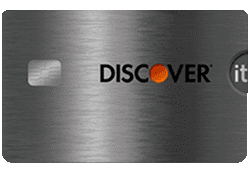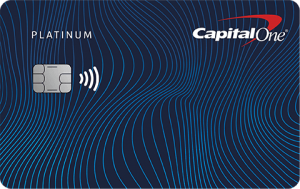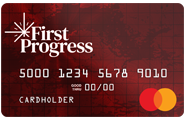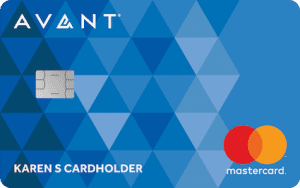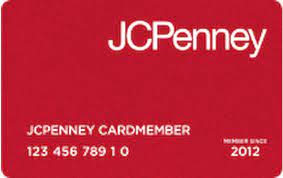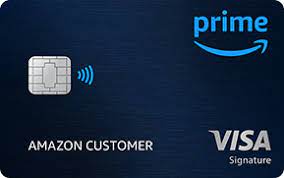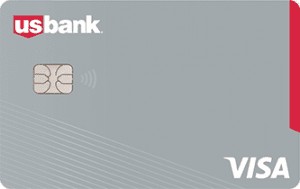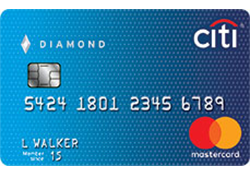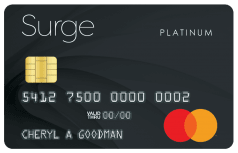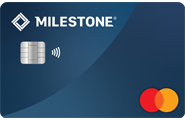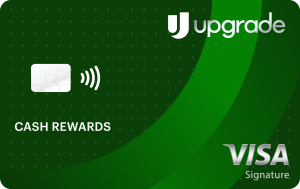If you have bad credit, you can use bad credit cards to build your credit and improve your credit score. You will need to develop good habits, but if you can get approval for a card, you can use it to boost your credit history.
Fortunately, there are companies that offer credit cards for bad credit. Here are The Smart Investor select's picks of top credit cards for bad credit:
Card | Rewards | Annual Fee | APR | ||
|---|---|---|---|---|---|
None | $35 | 25.14% Variable | Review | ||
None | $0 – $99 | 24.90% | Review | ||
1-2%
2% cash back at gas stations and restaurants on up to $1,000 in combined purchases each quarter and unlimited 1% cash back on all other purchases
| $0 | 28.24% Variable | Review | ||
1%
1% cash back rewards on eligible gas, grocery purchases and mobile phone, internet, cable and satellite TV services
| $75 – $99
$75 for the first year. After that, $99 annually ($8.25 per month)
| 29.24%* Variable | Review | ||
N/A | $0 | 29.99% (Variable) | Review | ||
None
| $29
|
25.24% Variable | Review | ||
None
| $59 | 35.99% Variable | Review |
OpenSky® Secured Visa® Credit Card
Reward Details
Current Offer
Credit Rating
Annual Fee
0% Intro
APR
- Overview
- Card Features
- Pros & Cons
- FAQ
The No Credit Check feature is probably the most exciting thing about the OpenSky Secured Credit Card. This is perfect for anyone trying to build credit, whether you’re just starting out or trying to rebuild previously damaged credit.
The OpenSky Secured Credit Card operates like the conventional unsecured credit card, except that it doesn’t check your credit. This means a poor credit score will have no impact on your account approval.
You are only required to pay a refundable security deposit ($200 – $3,000) when you create an account. This deposit is what determines your credit card limit.
This card can be used to make regular purchases wherever Visa is accepted. It offers you fraud protection and the ‘secured’ status of your card is kept confidential. You are even eligible for special Visa discounts.
- APR: 25.14% Variable
- Annual fee: $35
- Balance Transfer Fee: N/A
- Foreign Transaction Fee: 3%
- Rewards Plan: None
- Sign Up bonus: None
- 0% APR Introductory Rate period: None
- No Credit Check
- Flexible Credit Limit
- You Don’t Need A Bank Account
- Reports To The Three Major Bureaus
- No Grace Period
- Annual Fee
- No Signup Bonus
- $200 Minimum Deposit
How long will I use the card until my credit score goes up?
This really depends on your circumstances and spending habits. If you’re regularly using the card and making your payments on time, you should start to see your credit score increasing in several months.
According to OpenSky, half of its customers who make payments on time see a FICO score increase of 30 or more points after just three months.
Do the card providers report payments to all credit bureaus?
Yes, OpenSky (Capital Bank) reports your payment activity to all three major credit bureaus; TransUnion, Equifax and Experian which can help to boost your credit score in a matter of months.
What are the top reasons not to get the card?
The top reason not to consider the OpenSky Secured visa is similar. While you can have some flexibility about your credit limit according to the amount you provide as a deposit, it is dollar for dollar. At a base $200 deposit, you’ll only get a $200 limit. There are other secured credit card options that provide a $200 limit with a deposit as low as $49.
What’s the initial credit limit?
The credit limit for an OpenSky Secured Visa credit card is determined by your deposit. You can provide a security deposit of $200 to $3,000 and this will act as your credit limit. So, if you pay a $500 security deposit, you’ll have a $500 limit. However, after six months you may be eligible for a credit limit increase without needing to provide an additional deposit.
What are the card income requirements?
The OpenSky has flexible requirements, so you don’t need to worry about your income to qualify. In the case of OpenSky, you simply need to prove that your income is greater than your typical monthly expenses.
Indigo® Mastercard®
Reward Details
Current Offer
Credit Rating
Annual Fee
0% Intro
APR
- Overview
- Card Features
- Pros & Cons
- FAQ
The Indigo® Mastercard® is one of the few credit cards that approve applicants with a bankruptcy record and other less than perfect credit history.
You can prequalify for the Indigo Mastercard without affecting your credit scores. If you are looking for a credit card with no security deposit to help you rebuild your credit, consider Indigo Unsecured Mastercard.
This card does not offer points or cashback rewards. However, it reports on-time payments to all three major credit bureaus, helping the cardholder build a credit history.
The Indigo card is issued by Celtic Bank, which is better known for its commercial products than its consumer products.
- APR: 24.90%
- Annual fee: $0 – $99
- Balance Transfer Fee: Unknown
- Foreign Transaction Fee: 1%
- Rewards Plan: None
- Sign Up bonus: None
- 0% APR Introductory Rate period: None
- Pre-Approval
- Extended Warranty Protection
- Reports To The Three Major Bureaus
- Travel Protections
- Low Average Credit Limit
- No 0% APR Introductory Rate
- No Signup Bonus
- No Rewards
- High APR
What are the card income requirements?
The Indigo card requirements are quite flexible, and there is no specific income required in order to get this card.
Can you get pre approved?
The Indigo card has a pre approval option on the official website. You can enter your basic details and get the results within a few minutes.
What’s the initial credit limit I'll get?
Indigo card has an initial credit limit of $300, but there is no mention of when or if it is possible to get a credit limit increase. This makes this card a fairly basic option and you may need to move on to a different card once you’ve improved your credit score.
Can I add an authorized user?
Indigo allows account holders to add an authorized user with no charge. The authorized users will get a card linked to your account but showing their name to make purchases using your credit line.
Does Indigo offers a good digital experience?
Indigo has a decent website with a fairly comprehensive FAQ section, giving a good overall digital experience.
Discover it® Secured Credit Card
Reward Details
Current Offer
Credit Rating
Annual Fee
0% Intro
APR
- Overview
- Card Features
- Pros & Cons
- FAQ
The Discover it® Secured Credit Card is a great way to build your credit history while still earning cash back rewards like a normal credit card.
This is a great credit card option for students as well as folks trying to repair their credit history. You can earn 2% cash back at gas stations and restaurants on up to $1,000 in combined purchases each quarter and unlimited 1% cash back on all other purchases
Establish your credit line by providing a refundable security deposit from $200-$2,500 after being approved. Bank information must be provided when submitting your deposit.
Automatic reviews starting at 8 months to see if Discover can transition you to an unsecured line of credit and return your deposit.
- Rewards Plan: 2% cash back at gas stations and restaurants on up to $1,000 in combined purchases each quarter and unlimited 1% cash back on all other purchases
- APR: 28.24% Variable
- Annual fee: $0
- Balance Transfer Fee: 5%
- Foreign Transaction Fee: 3%
- Sign Up bonus: Discover will match all the cash back you’ve earned at the end of your first year.
- 0% APR Introductory Rate period: None
- Build Credit History
- Cash Back Rewards
- Flexible Redemption Options
- Refer a Friend for Cash Back
- Put Down a Refundable Deposit
- Less Merchant Acceptance
- High Purchase APR
Does Discover ask for proof of income?
It is unlikely that you will need to provide proof of income for the Discover secured card.
What is the initial credit limit?
The minimum credit limit on both cards is $200, but your initial credit limit will be determined by the amount of your deposit. Discover determines your credit limit based on the amount of your deposit, matching it dollar for dollar up to $2,500.
How long should I use the card to improve my credit score?
Three to six months is a good rule of thumb. Discover will review your account after seven months to see if your credit score has improved enough to qualify for an unsecured card. As a result, you should plan on using the card for at least six or seven months.
Can I add an authorized user?
Yes, you can add an authorized user to your account with the Discover secured card. This enables a family member or friend to link their own card to your account.
Does it offer pre approval?
Yes, the Discover secured card provides a pre-approval, which means you can get an approval decision in minutes. If you decide to proceed, there should be little to no delay, and you should have your new card in seven to ten days.
Credit One Bank® Platinum Visa®
Reward Details
Current Offer
Credit Rating
Annual Fee
0% Intro
APR
- Overview
- Card Features
- Pros & Cons
The Credit One Bank Platinum Visa with Cash Back Rewards card is a great option for those looking to build or rebuild their credit, while still earning rewards.
It's available to individuals with bad, poor, or fair credit. The credit limit varies based on your income and credit history, but you can start with an initial limit ranging from $300 to $3,000.
Credit One also automatically reviews accounts for opportunities to increase the credit line. You can also choose your payment due date to fit your financial habits. In addition to these benefits, you can also earn 1% cash back rewards on eligible gas, grocery purchases and mobile phone, internet, cable and satellite TV services.
- APR: 29.24%* Variable
- Annual fee: $75 – $99
- Balance Transfer Fee: None
- Foreign Transaction Fee: $1 or 3%
- Rewards Plan: 1% cash back rewards on eligible gas, grocery purchases and mobile phone, internet, cable and satellite TV services
- Sign Up bonus: None
- 0% APR Introductory Rate period: None
- Build Your Credit
- No Annual Fee
- Cash Back Rewards
- High Credit Limit
- Annual Fee
- High APR
- Penalty Fees
Capital One Secured Mastercard
Reward Details
Current Offer
Credit Rating
Annual Fee
0% Intro
APR
- Overview
- Card Features
- Pros & Cons
- FAQ
Building your credit with a reliable, secured credit card may be a very smart move; however, not all secured credit cards are designed equal.
Capital one secured Mastercard has some unique attributes that can win you over and make you trust them. Capital one secured card makes deposits less formidable, and this one of the unique qualities of capital one secured Mastercard.
The Capital One Secured Card doesn't offer rewards, but it does come with a few valuable benefits, including no foreign transaction fees, travel accident insurance, secondary car rental insurance, extended warranty coverage, and 24-hour travel assistance.
However, it does have some limitations, such as a relatively low initial credit limit and the lack of bonus offers compared to other card issuers.
- APR: 29.99% (Variable)
- Annual fee: $0
- Balance Transfer Fee: None
- Foreign Transaction Fee: $0
- Rewards Plan: N/A
- Sign Up bonus: N/A
- 0% APR Introductory Rate period: N/A
- Build Your Credit
- No Annual Fee
- No Foreign Transaction / Balance Transfer Fee
- Flexible Security Deposit
- No Rewards
- High APR
- Put Down a Refundable Deposit
Can I add an authorized user?
Yes, the Capital One Secured allows you to add an authorized user to your account. This will allow a family member or friend to have their own card linked to your account.
Do the cards report payments to all credit bureaus?
Capital One will report your payment activity to all three of the major credit bureaus. Additionally, it provides a platform to monitor your credit score, so you can keep track of any changes as you use the card and work on other ways to improve your credit.
How long does it take for card approval?
The Capital One Secured offers pre approval, which means that you can get an approval decision in a matter of minutes. If you decide to proceed, there should be a minimal delay and you can expect your new card in seven to 10 days.
How long should I use the card to improve my credit score?
A good rule of thumb is three to six months. However, Capital One will review your account after six months to determine if your credit score has increased sufficiently to upgrade to an unsecured card. So, you should be looking at using the card for at least six or seven months.
What are the top reasons not to get this card?
The top reason not to get the Capital One Secured is if you’re looking for a card that offers rewards. This is a very basic secured credit card that aims to help you build or rebuild your credit, but there are no other major benefits.
The First Progress Platinum Elite Mastercard® Secured Credit Card
The First Progress Platinum Elite Mastercard® Secured Credit Card
Reward Details
Current Offer
Credit Rating
Annual Fee
0% Intro
APR
- Overview
- Card Features
- Pros & Cons
While there are several secured cards available to help you rebuild your credit, the First Progress Platinum Elite Mastercard® Secured Credit Card has some advantages. You can open an account with a deposit of $200 to $2,000. Your credit limit will be determined by the amount of your deposit. So, if your deposit is $500, you'll have a credit limit of $500.
In addition, the First Progress Platinum Elite reports to all three major credit bureaus. Every monthly payment you make is reported to Equifax, TransUnion, and Experian. This makes it easier to build your credit faster.
This is a basic secured card, but you should be aware that there are fees and charges associated with your account. The annual fee for the card is $29 , which is lower than that of comparable secured cards.
- APR: 25.24% Variable
- Annual fee: $29
- Balance Transfer Fee: N/A
- Foreign Transaction Fee: 3%
- Rewards Plan: None
- Sign Up bonus: None
- 0% APR Introductory Rate period: N/A
- Easy Application
- No Credit Check
- Set Your Own Credit Limit
- Reports to All Three Credit Bureaus
- Annual Fee
- No Upgrade Possibilities
- No Rewards & Sign up Bonus
Avant Credit Card
Reward Details
Current Offer
Credit Rating
Annual Fee
0% Intro
APR
- Overview
- Card Features
- Pros & Cons
The AvantCard Credit Card is a great place to start for anyone looking to build a credit line or who has limited credit options due to past credit issues.
Despite the fact that the Avant Card has fewer bonus options and perks when compared to other credit cards, it is highly recommended for people looking for a card that can help boost their credit score quickly, especially for those applying for their first credit card. When it comes to building a credit history, the AvantCard Credit Card provides an alternative option.
While no security deposit is required, AvantCard does charge an annual fee. This fee is disclosed to applicants during the pre-qualification process, and while it is typically $59 per year, Avant notes that this can vary depending on market tests.
- APR: 35.99% Variable
- Annual fee: $59
- Balance Transfer Fee: N/A
- Foreign Transaction Fee: Unknown
- Rewards Plan: None
- Sign Up bonus:None
- 0% APR Introductory Rate period: None
- No Security Deposit
- Pre-Qualification Process
- Reports to Three Credit Bureaus
- Periodic Account Review
- No Balance Transfers Permitted
- Annual Fee
- Low Credit Limits
- High APR Rate
- No Rewards
Compare the Best Credit Cards For Bad Credit
What Should I Look for in a Credit Card if I Have Bad Credit?
If you have bad credit, your options for credit cards will be more limited compared to someone with good credit. However, you will still have choices. So, it is important to look for the right card for your circumstances. Here are some of the things you should look for:
- The Interest Rate: This is the primary factor that many people consider when looking for credit cards. It should also be your first point of comparison. Since you’re looking at cards for bad credit, the interest rates are likely to be higher, but you may still find some cards are more favorable than others.
- Low Annual Fee: Finally, check the annual fee. Many issuers waive the fee in the first year, but you will need to think long term and what annual fee will apply after this. Consider whether you can easily offset the annual fee with any rewards; if you can’t you may be better with a $0 annual fee non reward card.
For many consumers, a lack of an annual fee is an attractive feature of any credit card. Lenders have recognized this trend, and today, most cards do not have an annual fee. However, savvy consumers want more from their credit cards. In this chart created with US news data, you can see the percentage of no-annual fee cards by card type.
- Appropriate Rewards: There are lots of reward credit cards on the market, but the rewards tend to be less generous when you have bad credit. Don’t get so carried away that you’re being offered rewards that you don’t think about whether they are appropriate for your spending. Earning air miles for your spending will be next to useless if you never travel, or earning points in certain point categories are not worth it if you wouldn’t typically spend in these categories.
- Whether You Need a Deposit: Some bad credit cards require a deposit that is used to create your credit limit. This can be an easy way to get a card, but if you don’t have any spare cash, you will struggle to make the card work.
- Extra Charges: Many credit card for bad credit score have a fee structure with charges for a number of situations. So, it is important that you check what fees and charges apply to an account. While you may have every intention of making payments on time, ensure that late fees are not exorbitant, or if you tend to use your card when you travel, be sure there are no hefty foreign transaction fees.
Not everyone has perfect credit, but does that mean that credit cards are out of your reach?
Fortunately, there are companies that offer credit cards for bad credit. So, here we’ll explore these providers and the card options that are open to you.
What Does Bad Credit Mean?
Your history of making payments on credit cards, loans or even utility bills is recorded on your credit file. Bad credit refers to having a poor history of paying your bills on time. It suggests to lenders that there is a likelihood that you will fail to make your payments on time in the future.
Bad credit makes it more difficult to borrow money, particularly at competitive rates, as you will be considered a riskier prospect than someone with an excellent credit score.
In terms of FICO scores, if you have a score of 579 or lower out of a possible 850, you are considered to have bad credit. If you have a score of 580 to 669, your score is fair. According to Experian statistics, 62% of borrowers with a bad credit score are likely to become delinquent on their debt repayment in the future.
This means that many lenders may be reluctant to offer you a credit card, so you will need to look for a specialized lender.
How to Use Credit Cards to Improve Your Credit?
If you have bad credit, you can use credit cards for bad credit to build credit and improve your credit score. You will need to develop good habits, but if you can get approval for a card, you can use it to boost your credit history.
- Avoid Getting Too Many Cards
If you’ve had approval for one bad credit card, you may be tempted to sign up for others, but this can be a mistake. Each time you apply for a card, it is noted on your credit file. So, even if you get approved, it will show on your credit history. You should wait at least three months between applications. However, this will give you a few months to show you can handle your new card responsibly.
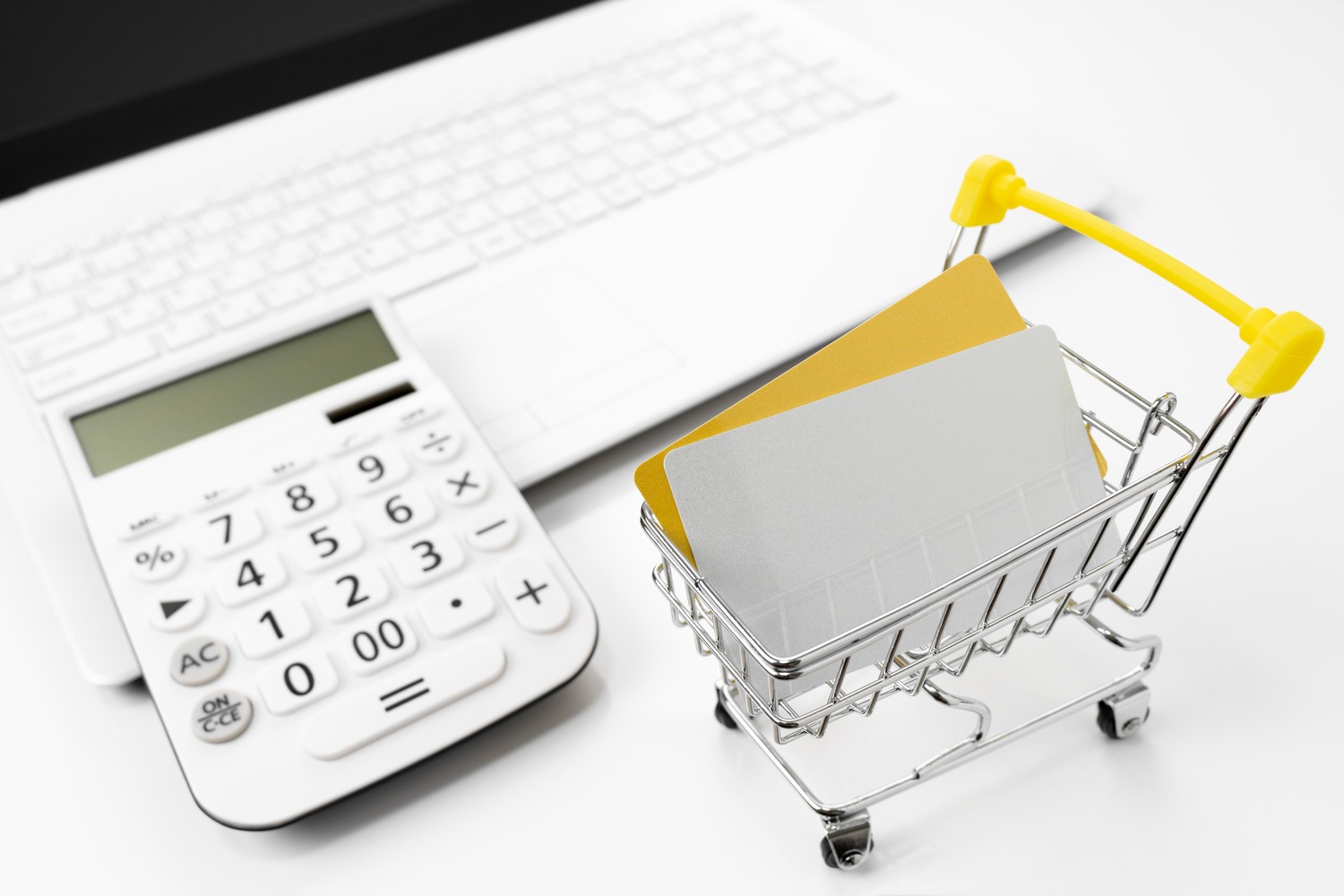
- Ensure Your Payments are Always Made on Time
The biggest factor that affects your credit score is whether you make payments on time. If you’re late making payments or miss a payment altogether, it will create a negative mark on your credit history. So, be sure to ensure that you pay at least the minimum payment each month.
- Keep Your Old Accounts Open
The credit bureaus also look at the length of your credit history. So, even if you’re not using an old credit card, think seriously about whether you want to close out the account. Unless the account is attracting fees or you’ll be tempted to use the card, it is a good idea to keep the account open.
- Keep Your Balance Low
Once you have a new card in your hand, you may be tempted to rush out and buy that large purchase you’ve had your eye on. But, this could impact your credit score.
To calculate your credit score, the credit bureaus not only look at your payment history, but also your credit utilization ratio. This is a measure of your current credit card balances as a percentage of your total available credit. So, aim to keep your balance as low as possible, even if you get a credit limit increase.
Carrying a credit card balance can be a massive impediment to financial health. However, there are 0% credit cards that allow you to pay down your debt without incurring interest within the introductory period.
As you can see from this FED Survey of Consumer Finances data chart, the age group that tends to carry the highest credit card balances is the 75 and older age group with $8,000 on average. This is closely followed by the 45 to 54 age group with an average of $7,670.
How to Get a Credit Card with Bad Credit?
Trying to get a credit card can be a daunting process, particularly when you have bad credit. However, you can make it a little easier with these steps.
- Check Your Credit Score: If you’ve missed a few payments or had an application for credit rejected in the past, you may assume you have bad credit, but the only way to know for sure is to check your score. There are a number of sites that offer free credit score checks or you can purchase a copy of your report from one of the three main credit bureaus.
- Forget About Cards Not Suited to Your Score: Once you know your score, you need to forget about applying for cards that are not aimed at your credit level. If a card needs a high credit score, even applying will lower your score further. You can usually spot cards aimed at good or excellent credit by the benefits offered. So, if a card has a low APR, excellent rewards and impressive promotional rates, you should look elsewhere.
- Target Cards for Bad Credit: As we touched on above, there are issuers that have credit card options that are tailored for those with bad credit. So, you need to look for cards that are designed for your circumstances. This could be a secured credit card or one with very modest rewards; there are lots of companies that offer credit building cards that could help you.
- Continue Making Payments on Time: While you’re researching your card options, you need to ensure that you continue making payments on time. Many utility companies report payments to the major credit bureaus, so you could add a few points to your score before you apply.
- Pay Down Existing Balances: If you currently have other lines of credit, try to pay down the balances. As we discussed earlier, your credit utilization ratio will impact approval decisions. So, if possible, try to reduce your outstanding balances.
- Don’t Apply for Multiple Cards: Each application will be recorded on your credit file, so don’t apply for multiple cards to try and get one approval. If you’re unsure if you will qualify, use a site that only performs a soft credit search. This will give you a good idea of your options without impacting your credit score.
Getting approval for a credit card for bad credit can take time, so don’t rush into any decisions. Take a little time to assess your options and only when you’re sure a card would benefit you, proceed with the application.
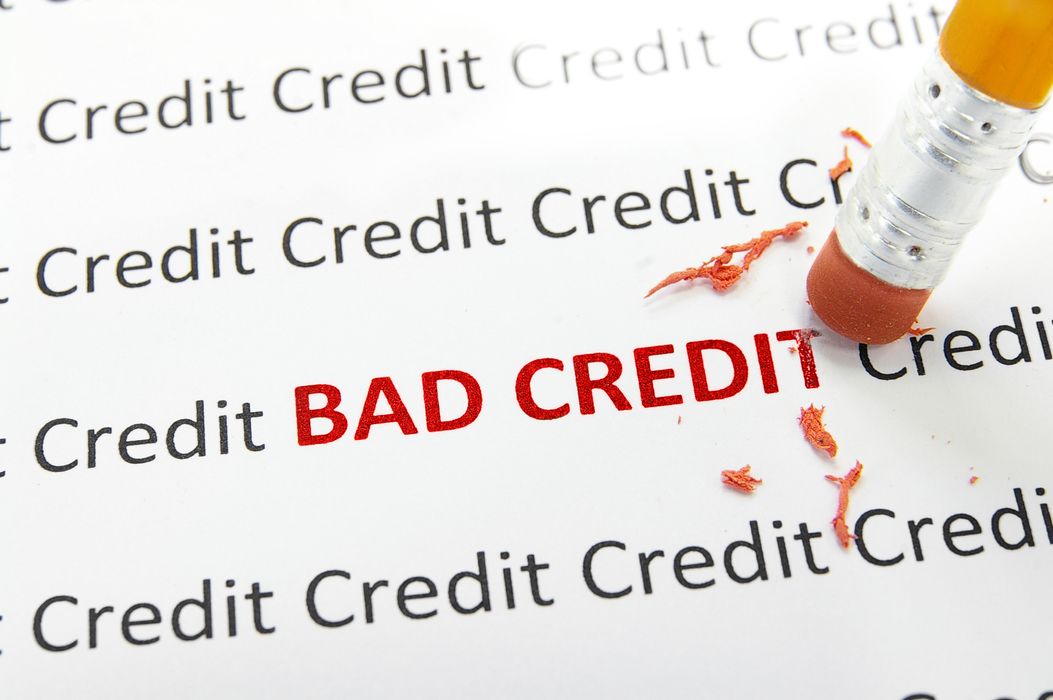
Are There Any Guaranteed Approval Credit Cards for Bad Credit?
Secured cards are the closest thing that you can get to a guaranteed approval card. These cards require you to provide a cash security deposit to secure your card. The card issuer holds this deposit in a separate account to provide assurance that if you fail to pay your bill, they can claim the funds. This protection for the issuer makes it easier for people with bad credit to gain approval.
However, most issuers will still perform a credit check, so you may still need to meet a minimum credit score.
As you’re using the card, your card issuer will report your activity and payments to the credit bureaus. So, you can use this card to improve your credit score. In fact, some issuers offer the option to upgrade to an unsecured card after a certain period of maintaining a good payment history.
How Long Does it Take to Build Good Credit From Bad Credit?
A good credit score is a record of good financial behavior over time. There are several factors that the credit bureaus consider when calculating scores. This includes:
- Your Payment History: This typically accounts for 35% of your score. So, you need a track record of consistently making payments on time.
- Your Length of Credit History: This accounts for approximately 15% of your score and covers how long your various credit accounts have been opened on average.
- New Credit: This covers if you’ve opened new credit accounts within a short amount of time. Typically, you should leave three to six months at least between applications.
- Credit Mixture: The credit bureaus will look at if you have experience managing different types of credit.
So, making a few payments on time will not immediately build good credit. You will need to demonstrate to lenders that you are a trustworthy credit user and less risky prospect.
It typically takes at least six months to generate sufficient credit activity to establish a credit history. But, it can take years to establish a good credit score. It is a better idea to focus on creating good financial habits, and periodically check in to see how your score has improved.
Benefits and Drawbacks of Credit Cards for Bad Credit
Like all financial products, credit cards for bad credit have both benefits and drawbacks. It is important to be aware of both the potential positives and negatives before you make a final decision. So, here we’ll look at just some of the most important points.
Pros | Cons |
|---|---|
They Can Help You Build Credit | A High Cost of Borrowing |
Greater Flexibility | Fees |
Improved Security | Applying Could Damage Your Credit |
Low Introductory Rates | You Need to Take Care To Avoid Further Financial Problems
|
Pay Over Time |
- They Can Help You Build Credit
Your credit history is essentially a track record of your debts and how you pay them back. When you open your new credit card account, the lender will report its activity to the credit bureaus.
This means that every time you make a payment on time, you’ll start to improve your credit score.
- Greater Flexibility
In the current climate, many establishments are only accepting card payments for purchases to minimize contact.
So, carrying a credit card can provide greater flexibility.
- Improved Security
Credit cards are frequently used as they offer an additional layer of security.
If your card is lost or stole, you can have a hold placed on your card to avoid any fraudulent transactions.
- Low Introductory Rates
Some cards let you consolidate current debts and pay the debts within the introductory period without incurring any interest.
- Pay Over Time
If you’re planning a significant purchase, it can be difficult to save a little each month. But, if you use your card, you can make your purchase and pay over time.
- A High Cost of Borrowing
Card issuers set their rates according to the level of risk you pose. With bad credit, your potential risk is high for the lender, so your rate is set accordingly.
This means that if you carry a balance on your card, it is likely to be a very high cost of borrowing. This is before you factor in fees or cash advances etc.
- Fees
Credit cards charge an annual fee, which can be costly if you keep the credit card account open for a long period of time.
Besides annual fees, potential cardholders should pay attention to the late payment fees, foreign and balance transfer fees.
- Applying Could Damage Your Credit
As we touched on above, the credit bureaus take note of every credit application. So, merely applying could damage your credit score.
While you can offset this by using your card to build good credit habits, you need to be confident that you will get card approval.
- You Need to Take Care To Avoid Further Financial Problems
If you’ve struggled with your finances in the past, having a card with even a small limit could be a temptation to slip into bad habits.
If you will have difficulty using your new card responsibly, it could be more of a burden than a resource.
Top Offers From Our Partners
Advertiser Disclosure
The product offers that appear on this site are from companies from which this website receives compensation.
What Are the Best No Annual Fee Credit Cards for Bad Credit?
The annual fee is a major factor to consider when choosing a credit card. Fortunately, there are some great no annual fee cards for bad credit:
Discover it® Secured
The Discover It Secured Card not only has no annual fee, but also allows you to earn cash back. You can earn 2% cash back at gas stations and restaurants on up to $1,000 in combined purchases each quarter and unlimited 1% cash back on all other purchases. The card also has an introductory APR rate for balance transfers is lower for six months. After this, the rate is 28.24% Variable variable.
You can establish your credit line for this card by providing a security deposit of $200 or more. This is a refundable amount, but will help to establish your credit limit.
Capital One Secured Mastercard
Another option is the Secured Mastercard From Capital One. When you make a $49, $99 or $200 security depot, you can obtain a $200 initial credit line. The more money you deposit, the increased chances of a higher credit line being awarded.
While this card does not offer rewards, you can be automatically considered for a higher credit line within 6 months. Capital One also monitors your account and if you demonstrate you’re using it responsibly, you can earn back your initial deposit as statement credit.
What are the Best High Limit Cards for Bad Credit?
Petal® 2 Visa® Credit Card
If you need a high limit, there are still options with bad credit. The Petal 2 Visa is an advanced card that is designed to help you to build credit, yet it has no fees. In addition to a minimum $500 credit limit, you can earn cash back on your purchases.
What is really innovative is that you earn additional rewards for paying your card on time. You’ll earn Earn 2% – 10% cash back at select local and national merchants. Up to 1.5% on everyday purchases. There is also bonus cash back of 2% to 10% at selected merchants.
Credit One Bank Platinum Visa
Another great high limit card for bad credit is the Credit One Bank Platinum Visa for Rebuilding Credit. This card is available to those with a bad, poor or fair credit rating. The card’s limit is variable depending on your income and credit history. However, you can obtain an initial credit line of $300 to $3,000.
Credit One also automatically reviews accounts for opportunities to increase the credit line. You can also choose your payment due date to fit your financial habits. In addition to these benefits, you can also earn 1% cash back on eligible purchases.
What is the Easiest Credit Card to Get with Bad Credit?
If you’re worried about qualifying for a card, there are some cards that are considered the easiest to get with bad credit. One such card is the Indigo Unsecured Mastercard.
Indigo® Mastercard®
This card has been specifically designed for those who don’t have perfect credit. Prequalification is easy and will not impact your credit score. Yet this is an unsecured credit card that does not require a security deposit. Additionally, your card payments will be reported to all of the major credit bureaus to help you build your credit history.
OpenSky® Secured Visa®
Another option is the OpenSky Secured Visa. This is a secured card, but does not require a credit check. You can set your own credit limit with a cash deposit of up to $3,000. Like the Indigo, all your account activity will be reported to the credit bureaus, helping you to qualify for an unsecured card in the future.
The OpenSky application process takes just five minutes, but you should be aware that there is a $35 annual fee.
What are the Best Easy Credit Cards for Bad Credit?
This follows on from the previous options, but there are some excellent easy credit cards. These are designed not only to be easy to qualify for, but also easy to use.
Capital One Secured Mastercard
We’ve mentioned this card before, but the Secured Mastercard From Capital One should be considered in this category. This card allows you to make a small deposit for an initial credit line of at least $200. However, if you make a higher deposit, you could qualify for a larger credit line.
The main draw of this card is that it is simple to use. While it doesn’t offer any rewards, Capital One keeps an eye on your account and you’ll be automatically considered for higher credit lines. You can even earn back your deposit as statement credit.
Avant Credit Card
Another option is the AvantCard credit card. This is a simple card with no fees and no security deposit required. It will help you to develop responsible spending habits. The annual fee can vary from $0 to $59 and there is no rewards program, but you can check your eligibility online without affecting your credit score.
What are the Expected Credit Card Rates for Bad Credit?
Credit card issuers calculate your rate according to your credit score and other factors. The cards usually have a variable annual percentage rate or APR. This means that the rate may fluctuate according to market conditions.
The rate is set by the lender looking at the benchmark prime rate from the Federal Reserve and then adding in percentage points according to your credit and the associated risk.
So, while the rate can vary significantly depending on your specific circumstances, the lender often provides an indication of the rates you may expect, depending on your qualification.
There are cards on the market today for bad credit that have a rate as low as 16% APR, but it is more typical to expect to pay a rate of 20-35%.
Of course, you will need to consider more than just the rate. For example, you may prefer a card that has a higher rate if you plan on clearing the balance each month or if it pays generous rewards. You may also prefer a higher rate card that does not have an annual fee.
This means that you will need to look at all the features of the card, not just the rate, before making your final decision.
What are the Best Store Credit Cards for Bad Credit?
If you’re concerned about card approval, you may prefer to look at store credit cards. These often have more flexible qualification requirements, so may be easier to get and more beneficial to use.
JCPenney Credit Card
The JCPenney credit card allows you to earn 1 point for every dollar you spend on homewares, clothing, appliances and accessories. You can redeem a $10 rewards certificate for every 200 points you accumulate. The card has no annual fee and you’ll also receive up to 20% off your first card purchase.
So, if you regularly shop at JCPenney, you can accumulate some serious savings, despite the restrictions on the card for branded purchases only. However, the card has a steep 26.99% APR and you could incur late fees of $38.
Amazon Prime Rewards
The Amazon Prime Rewards Visa Signature Card is one of the best shopping cards. It offers 5% back on Amazon.com, Amazon Fresh, Whole Foods Market, and Chase Travel purchases. Plus, you’ll get 2% back at gas stations, restaurants, and on local transit, and 1% on all other purchases
Warehouse clubs and superstores, on the other hand, are not included, and you are not eligible for the 0% intro APR period.
Overall, the Amazon card is appropriate for people who buy or buy their groceries at traditional supermarkets. It is less valuable to other cardholders who do not wish to pay the $1169 membership fee.
What is the Best Secured Credit Card for Bad Credit?
As we discussed earlier, secured credit cards can be a great option for those with bad credit. These cards require you to provide a deposit that allows the lender to have the assurance that if you fail to pay, they can recover your debt from your deposit. However, many secured credit cards have the option to transfer to an unsecured card once you have established you can responsibly handle using the card.
U.S. Bank Secured Visa®
The U.S. Bank Secured Visa card is likely to suit someone who wants a higher credit line while working to improve their credit. The secured card exists as a generic option for those who need to build a stronger credit history, with no annual fee, no special benefits, and no rewards earning.
If you have a large sum of cash to put down as a security deposit, you can get a much higher credit line than you would with other secured cards.
Citi® Secured Mastercard®
There are no rewards with the Citi Secured Mastercard. Benefits of using this card include free FICO score access, account alerts, and a flexible payment due date. However, one of the disadvantages of using this card is the high APR so you should make sure to pay on time.
The card has no annual fee, and Citi reports all card activity to all three major credit bureaus. In addition, Citi will review your account within 18 months to determine whether you are eligible for a refund of your deposit.
The First Progress Platinum Elite Mastercard® Secured Credit Card
Another good option is the First Progress Platinum Elite Mastercard® Secured Credit Card. This card has a $29 annual fee, but you can pay off your balance and receive back your deposit at any time. The company uses a soft inquiry, so you should have no negative impact on your credit score. You can complete the application online and there is no minimum credit score that is required for approval.
You can receive a credit line according to your deposit, which is typically $200 to $2,000 that you submit with your application.
What are the Best Cards for Bad Credit With No Deposit?
Credit One Bank Platinum Visa
If you can’t manage a deposit, there are still some solid choices for cards with no deposit. One of the best is the Credit One Bank Visa. This card is a great option to build credit. Your annual fee will be $75 – $99 . However, you can earn 1% cash back rewards on eligible gas, grocery purchases and mobile phone, internet, cable and satellite TV services.
You can choose your payment date and Credit One will regularly review your account for opportunities to increase your credit limit.
Surge Mastercard
Lorem ipsum dolor sit amet, consectetur adipiscing elit. Ut elit tellus, luctus nec ullamcorper mattis, pulvina
Another option is the Surge Mastercard® by Continental Finance. This is one of the leading servicers of credit cards for American consumers with bad credit. You’ll be assessed for both an APR and annual fee when your account is approved. You can expect a credit limit of $300 – $1,000* (subject to available credit), but you may be eligible for a credit limit increase once you have made six monthly payments on time.
You can check for pre qualification on the site without impacting your credit score. The easy, fast application process will deliver results within seconds. Additionally, you can access your account 24/7 online.
As you can see, just because you have bad credit, it doesn’t mean that you won’t be able to get a great credit card. Just be sure to check the full terms and conditions before proceeding with any application.
r dapibus leo.
How We Picked The Best Cards For Bad Credit: Methodology
To identify the best credit cards for individuals with bad credit, our team meticulously researched offerings from various issuers, focusing on options tailored for rebuilding credit. We rated these cards based on four key categories:
Credit Card Rewards and Fees (40%): We evaluate the card's fee structure, including annual fees, processing fees, and penalty fees. Additionally, we assess any rewards or cash back programs available to cardholders. Cards with reasonable fees and potential rewards opportunities despite bad credit scores receive higher ratings in this category.
Features Including Credit Building (30%): This category assesses features designed to help individuals rebuild their credit, such as reporting to major credit bureaus, credit limit increases over time, and access to credit monitoring tools or educational resources. Cards offering robust credit-building features while accommodating individuals with bad credit receive higher scores.
Customer Experience (20%): We examine the ease of application, customer service quality, and online account management tools. Cards with streamlined application processes, responsive customer support, and user-friendly mobile apps or online portals receive higher ratings, ensuring a positive experience for cardholders with bad credit.
Issuer Reputation (10%): We scrutinize each issuer's reputation, considering customer feedback, financial stability, and regulatory standing. Issuers with positive reviews from cardholders and a track record of providing suitable products and customer service to individuals with bad credit receive higher ratings in this category.
This comprehensive evaluation ensures that the best credit cards for bad credit offer reasonable fees, effective credit-building features, a positive customer experience, and a reputable issuer, empowering individuals to improve their creditworthiness responsibly.



